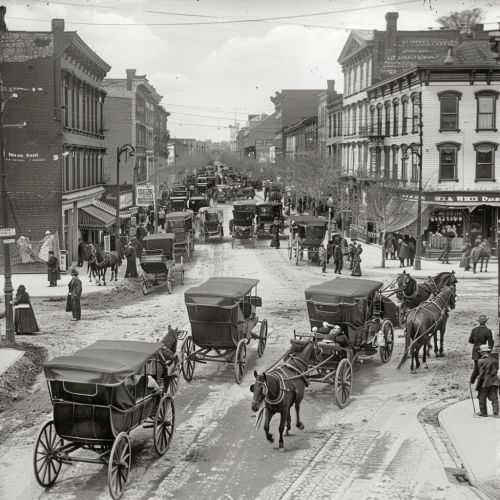Allentown, Pennsylvania
History
Allentown, Pennsylvania, has a rich and diverse history that dates back to its founding in 1762 by William Allen, a wealthy shipping merchant. The city, originally named Northampton Town, was renamed Allentown in 1838 and became a major center of industry during the 19th and 20th centuries.
Allentown's early history is marked by its role in the American Revolutionary War. The city served as a hiding place for the Liberty Bell, which was moved from Philadelphia to prevent its capture by British forces. The bell was hidden in the basement of the Zion's Reformed Church, a historical landmark that still stands in the city today.
The city's industrial growth began in the mid-19th century with the opening of the Lehigh Canal, which facilitated the transportation of coal from the Lehigh Valley to Philadelphia. This led to a boom in the iron industry, with the establishment of the Allentown Rolling Mill Company in 1860. The iron industry played a crucial role in Allentown's economy until the late 20th century when the city began to diversify its industries.
In the 20th century, Allentown became a major manufacturing center, with industries ranging from silk and textiles to brewing and heavy machinery. The city was also a key player in the automotive industry, with the Mack Trucks company establishing its headquarters in Allentown in 1905.


Geography and Climate
Allentown is located in the Lehigh Valley region of eastern Pennsylvania, approximately 60 miles north of Philadelphia. The city covers an area of 18 square miles and is characterized by its rolling hills and valleys.
The climate in Allentown is classified as a humid continental climate, with four distinct seasons. Summers are typically hot and humid, while winters can be cold and snowy. The city receives an average of 32 inches of snow per year.
Demographics
As of the 2020 census, Allentown had a population of approximately 121,442, making it the third-largest city in Pennsylvania. The city has a diverse population, with a significant number of residents of Hispanic or Latino origin.
Economy
Allentown's economy has undergone significant changes over the past few decades. The city was once a major center for heavy industry, but today it is home to a diverse range of businesses and industries. Major sectors include healthcare, education, and retail trade.
The city is also known for its vibrant arts scene, with numerous galleries, theaters, and music venues contributing to the local economy.
Education
Allentown is home to several institutions of higher education, including Muhlenberg College and Cedar Crest College. The city's public school system, the Allentown School District, serves over 17,000 students and includes two high schools, four middle schools, and 16 elementary schools.
Culture
Allentown has a vibrant arts and culture scene, with numerous museums, galleries, and theaters. The city is home to the Allentown Art Museum, which houses a collection of over 19,000 works of art.
The city also hosts several annual events and festivals, including the Great Allentown Fair and the Blues, Brews, and Barbecue festival.
Transportation
Allentown is served by several major highways, including Interstates 78 and 476. The city also has a public transportation system, operated by the Lehigh and Northampton Transportation Authority.
The Lehigh Valley International Airport provides commercial air service to the Allentown area.
